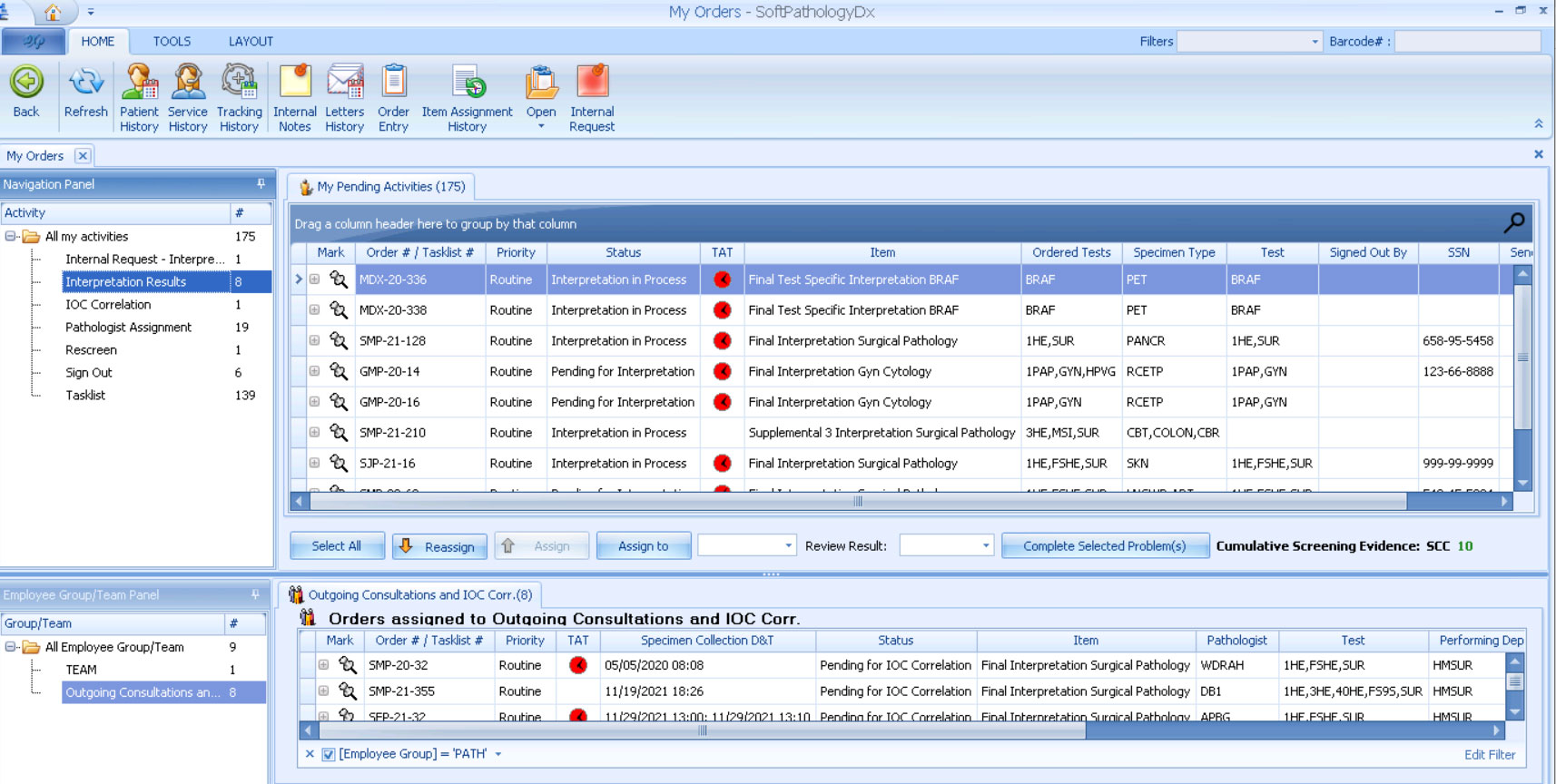SoftPathDx®
SoftPathDx® is a diagnostic pathology and cytology laboratory information system (LIS) that integrates with digital pathology systems.
SCC Soft Computer’s SoftPathDx reliably captures data by providing a highly customizable reporting workflow that the client can configure. It supports both anatomic pathology and cytology with a diverse reporting and imaging system that seamlessly integrates with SCC’s Pathology Information Systems Suite of applications. SoftPathDx also offers easy reflex ordering for tests through the GIS suite that includes HPV tests, SoftMolecular® analysis, and SoftCytogenetics® chromosome analysis, with the Pathology Report feature creating the final report. Furthermore, SoftPathDx allows users to share specimens with other labs like biochemistry, flow cytometry, cytogenetics, and molecular genetics. This capability lets users integrate results and track specimens through multiple labs.
Multiple Reports
SoftPathDx consolidates test results from multiple sources into a clinical history file.
Easily Accessible Imaging
Imaging is accessible via SCC’s SoftMedia® image management system.
High Visibility of Workloads
Pathologists can see orders that have been assigned to them, including those that aren’t yet ready for interpretation.
Features and Benefits
SoftPathDx provides a flexible design for reports, workflows, and worksheets. It includes a rules-based manager that makes the system work the way users want it to. It also includes report templates with complex data, text, and images. Reports can use canned messages, synoptic text and free-form text, with the option of rules to manage content and collate reports. This feature supports clients by efficiently generating accurate, easy-to-read reports.
SoftPathDx includes barcode scanning capabilities, providing positive patient IDs.
Users can define rules that allow them to automatically test reflexes across technologies. This feature eliminates the errors of manual reflex ordering, reducing turnaround time for reflex tests.
SoftPathDx provides users with quick access to stainer status within the system. SoftPathDx also offers documentation of staining runs, typically for the purpose of identifying trends in quality control (QA).
SoftPathDx tracks specimen details like remaining material information and shared specimens between labs.
Users can create multiple reports and results for each patient or pathologist. This feature simplifies diagnostic pathology by consolidating test results from multiple sources into a single clinical history of the patient. It also allows access to this consolidated patient file throughout the patient’s life, and streamlines historical test results and reports comparisons, leading to more comprehensive and accurate reports.
Users can customize samples and workflows with action-driven protocols that are specific to a particular specimen or test. This feature facilitates ordering, accessioning, and workflow processes.
SoftPathDx makes imaging accessible via the SoftMedia image management system, which enables the addition of multiple images with defined attributes and categories. SoftMedia also allows clinical personnel to attach stored images to specific patient records, eliminating the need to maintain paper files. In addition, this feature provides a single source for all patient information. It can also document received materials like blocks or slides, which are often used as consulting samples.
The SoftPathDx Pathologist Dashboard allows pathologists to review their workload of assigned orders, including those that aren’t yet ready for interpretation. This dashboard also displays intra-departmental consultations, reviews, sign-outs, and IOC correlation, along with the number of orders qualifying for each of these pending activities. This feature allows pathologists to plan ahead by reviewing the number of pending cases. In addition, pathologists can use their dashboard to assign their orders to other pathologists or pathologist groups. Users can also customize the Pathologist Dashboard to ensure the pathologist can view desired data.
Users can create their own queries, which they can name and save to their folders. They can create and display these queries in a tabular format or pivot table, including charts and graphs. A pivot table allows users to manipulate data that will be displayed on the chart or graph. Queries are completely customizable and can generate reports that display information based on defined criteria. In the case of ad-hoc queries, users can bridge the query to pull data from completed reports for all qualifying orders.
